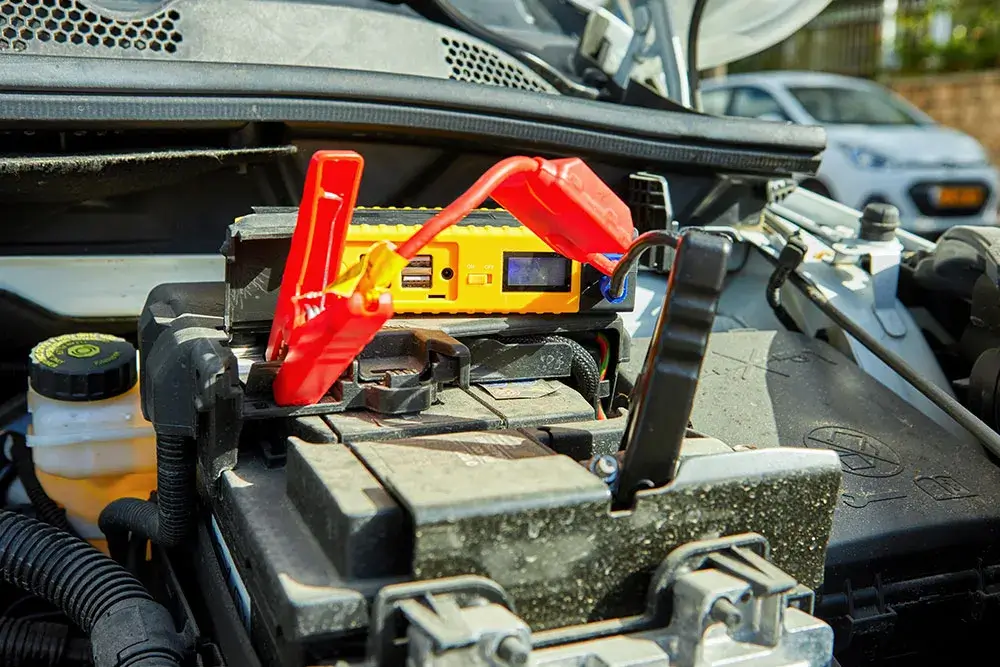As the cold winter months fade away and the warmer weather of spring and summer approaches, it’s an ideal time to give your car battery some attention. Car batteries can experience wear and tear from harsh winter conditions, but the rising temperatures in spring can also pose risks. Heat is one of the biggest enemies of car batteries, as it accelerates corrosion and weakens the battery’s internal components. Keeping your car battery healthy and well-maintained can help ensure reliable starts and extend its lifespan. Here’s how you can maintain your car battery for the warmer months ahead.
1. Check the Battery’s Charge
After the winter months, your battery may not be as strong as it once was, especially if cold temperatures drained it. Before the warmer weather sets in, it’s important to test your battery’s charge to ensure it’s holding power.
- What to do: Use a multimeter or a battery tester to check the voltage. A healthy, fully charged battery should read around 12.6 volts when the engine is off. If the reading is below 12.4 volts, it may indicate that the battery is weak or nearing the end of its life. Having it tested by a professional can give you a clearer picture of its health.
2. Inspect for Corrosion
Winter salt, road debris, and moisture can lead to corrosion around your car’s battery terminals. Corrosion can prevent the battery from charging properly, reduce the battery’s efficiency, and even cause issues with the electrical system.
- What to do: Check the battery terminals and cable connections for any signs of corrosion, which may appear as a white, powdery substance. If you notice corrosion, clean it off with a mixture of baking soda and water or use a specialized battery cleaning product. Be sure to wear gloves and eye protection when cleaning the terminals.
3. Ensure Proper Battery Connection
Loose or damaged battery connections can lead to poor performance and unreliable starts. Over time, vibration from driving or improper installation can cause the battery cables to loosen, especially after months of harsh weather.
- What to do: Ensure that the battery terminals are tightly connected to the battery posts. If the cables are loose, tighten them with a wrench, being careful not to over-tighten. If the cables are damaged or frayed, they may need to be replaced to prevent further issues.
4. Clean the Battery and Its Surroundings
Dirt, debris, and moisture can accumulate around the battery and interfere with its operation. Cleaning the area surrounding the battery helps to maintain its efficiency and keep the electrical system functioning properly.
- What to do: Wipe down the top of the battery with a clean cloth to remove any dirt or grime. Also, check the surrounding area for any debris that could interfere with the battery’s operation. Keeping the battery clean ensures better airflow and reduces the chances of overheating.
5. Test the Alternator
The alternator plays an essential role in charging your battery while the engine is running. If the alternator is faulty, the battery won’t charge correctly, which can lead to a dead battery, especially when driving in warmer temperatures.
- What to do: Have your alternator tested as part of a routine maintenance check. Mechanics can test whether the alternator is charging the battery correctly by measuring the voltage while the engine is running. If your alternator is underperforming, it may need to be replaced before it causes further issues.
6. Check the Battery’s Age
Car batteries typically last between 3 to 5 years, depending on usage and climate conditions. After the winter season, it’s important to assess the age of your battery to determine if it’s nearing the end of its life.
- What to do: Check the manufacture date on your battery. If it’s more than 3 years old, consider having it tested to ensure it still holds a charge. If your battery is close to the 5-year mark or is showing signs of weakness, it may be time to replace it before it fails in the warmer months when heat could accelerate the degradation process.
7. Avoid Short Trips
Short trips don’t give your car’s alternator enough time to fully charge the battery, especially when temperatures rise. Frequent short trips during warmer weather can cause the battery to drain over time and may lead to premature failure.
- What to do: If possible, try to avoid frequent short trips. Instead, give your car a longer drive every so often to allow the alternator to fully charge the battery. This helps maintain the health of the battery and ensures it’s always ready for a reliable start.
8. Keep Your Battery Cool
While winter cold can be tough on your battery, summer heat is often more damaging. High temperatures can cause the battery’s fluid to evaporate, leading to internal corrosion and a weakened charge.
- What to do: If possible, park your vehicle in a shaded area or in a garage to protect the battery from excessive heat. You can also invest in a battery insulation kit or a heat shield to help protect the battery from extreme temperatures. Keeping your battery cool during the summer months can help prevent premature failure.
9. Check for Leaks
A leaking battery is a serious issue that can cause electrical problems and even damage your car’s components. Leaks can be caused by overcharging, overheating, or physical damage to the battery casing.
- What to do: Check the battery for any signs of leakage. A leaking battery can appear swollen or have white powdery deposits around the edges. If you suspect that your battery is leaking, replace it immediately to avoid further damage to your car.
10. Keep Your Battery Healthy for the Warmer Months
As the weather warms up, taking steps to maintain your car battery is crucial for ensuring that it performs well throughout the year. By inspecting the battery, cleaning the terminals, checking the alternator, and addressing any signs of damage, you can prevent battery failure and avoid unexpected breakdowns. Regular maintenance will help ensure your car starts reliably and continues running smoothly through the warmer months, allowing you to enjoy a stress-free driving experience. Keep your battery in top condition, and you’ll be prepared for whatever the road brings this spring and beyond.

